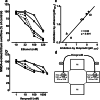Serotonin and beyond-a tribute to Manfred Göthert (1939-2019)
- PMID: 33991216
- PMCID: PMC8376721
- DOI: 10.1007/s00210-021-02083-5
Serotonin and beyond-a tribute to Manfred Göthert (1939-2019)
Abstract
Manfred Göthert, who had served Naunyn-Schmiedeberg's Arch Pharmacol as Managing Editor from 1998 to 2005, deceased in June 2019. His scientific oeuvre encompasses more than 20 types of presynaptic receptors, mostly on serotoninergic and noradrenergic neurones. He was the first to identify presynaptic receptors for somatostatin and ACTH and described many presynaptic receptors, known from animal preparations, also in human tissue. In particular, he elucidated the pharmacology of presynaptic 5-HT receptors. A second field of interest included ligand-gated and voltage-dependent channels. The negative allosteric effect of anesthetics at peripheral nACh receptors is relevant for the peripheral clinical effects of these drugs and modified the Meyer-Overton hypothesis. The negative allosteric effect of ethanol at NMDA receptors in human brain tissue occurred at concentrations found in the range of clinical ethanol intoxication. Moreover, the inhibitory effect of gabapentinoids on P/Q Ca2+ channels and the subsequent decrease in AMPA-induced noradrenaline release may contribute to their clinical effect. Another ligand-gated ion channel, the 5-HT3 receptor, attracted the interest of Manfred Göthert from the whole animal via isolated preparations down to the cellular level. He contributed to that molecular study in which 5-HT3 receptor subtypes were disclosed. Finally, he found altered pharmacological properties of 5-HT receptor variants like the Arg219Leu 5-HT1A receptor (which was also shown to be associated with major depression) and the Phe124Cys 5-HT1B receptor (which may be related to sumatriptan-induced vasospasm). Manfred Göthert was a brilliant scientist and his papers have a major impact on today's pharmacology.
Keywords: 5-HT receptor mutants; 5-HT3 receptor structure and function; AMPA receptors; Mode of action of ethanol; Mode of action of anesthetics; Mode of action of gabapentinoids; NMDA receptors; Presynaptic receptors; Voltage-dependent cation channels; nACh receptors.
© 2021. The Author(s).
Conflict of interest statement
The authors declare no competing interests.
Figures












Similar articles
-
Serotonin discovery and stepwise disclosure of 5-HT receptor complexity over four decades. Part II. Some contributions of Manfred Göthert.Pharmacol Rep. 2020 Apr;72(2):271-284. doi: 10.1007/s43440-019-00047-4. Epub 2020 Jan 20. Pharmacol Rep. 2020. PMID: 32048263 Review.
-
Effects of gaseous anesthetics nitrous oxide and xenon on ligand-gated ion channels. Comparison with isoflurane and ethanol.Anesthesiology. 2000 Oct;93(4):1095-101. doi: 10.1097/00000542-200010000-00034. Anesthesiology. 2000. PMID: 11020766
-
Inhibition of noradrenaline release via presynaptic 5-HT1D alpha receptors in human atrium.Naunyn Schmiedebergs Arch Pharmacol. 1996 Feb;353(3):272-80. doi: 10.1007/BF00168628. Naunyn Schmiedebergs Arch Pharmacol. 1996. PMID: 8692281
-
Advances in the pharmacology of lGICs auxiliary subunits.Pharmacol Res. 2015 Nov;101:65-73. doi: 10.1016/j.phrs.2015.07.026. Epub 2015 Aug 7. Pharmacol Res. 2015. PMID: 26255765 Review.
-
5-HT(3) receptors and neurotransmitter release in the CNS: a nerve ending story?Trends Neurosci. 2000 Dec;23(12):605-10. doi: 10.1016/s0166-2236(00)01662-3. Trends Neurosci. 2000. PMID: 11137150 Review.
Cited by
-
The Effects of Serotonin Receptor Type 7 Modulation on Bowel Sensitivity and Smooth Muscle Tone in Patients With Irritable Bowel Syndrome.Cureus. 2023 Jul 27;15(7):e42532. doi: 10.7759/cureus.42532. eCollection 2023 Jul. Cureus. 2023. PMID: 37637561 Free PMC article. Review.
-
Bibliometric development of Naunyn-Schmiedeberg's Archives of Pharmacology.Naunyn Schmiedebergs Arch Pharmacol. 2023 Jan;396(1):43-61. doi: 10.1007/s00210-022-02307-2. Epub 2022 Oct 25. Naunyn Schmiedebergs Arch Pharmacol. 2023. PMID: 36280660 Free PMC article.
-
Why Do Marijuana and Synthetic Cannabimimetics Induce Acute Myocardial Infarction in Healthy Young People?Cells. 2022 Mar 28;11(7):1142. doi: 10.3390/cells11071142. Cells. 2022. PMID: 35406706 Free PMC article. Review.
-
Potential Link Between Exercise and N-Methyl-D-Aspartate Glutamate Receptors in Alcohol Use Disorder: Implications for Therapeutic Strategies.Psychol Res Behav Manag. 2024 Jun 14;17:2363-2376. doi: 10.2147/PRBM.S462403. eCollection 2024. Psychol Res Behav Manag. 2024. PMID: 38895648 Free PMC article. Review.
References
-
- Aktories K, Gierschik P, Meyer zu Heringdorf D, Schmidt M, Schultz G, Wieland T. cAMP guided his way: a life for G protein-mediated signal transduction and molecular pharmacology–tribute to Karl H. Jakobs. Naunyn Schmiedeberg's Arch Pharmacol. 2019;392:887–911. doi: 10.1007/s00210-019-01650-1. - DOI - PubMed
Publication types
MeSH terms
Substances
Personal name as subject
- Actions
LinkOut - more resources
Full Text Sources
Other Literature Sources
Miscellaneous

